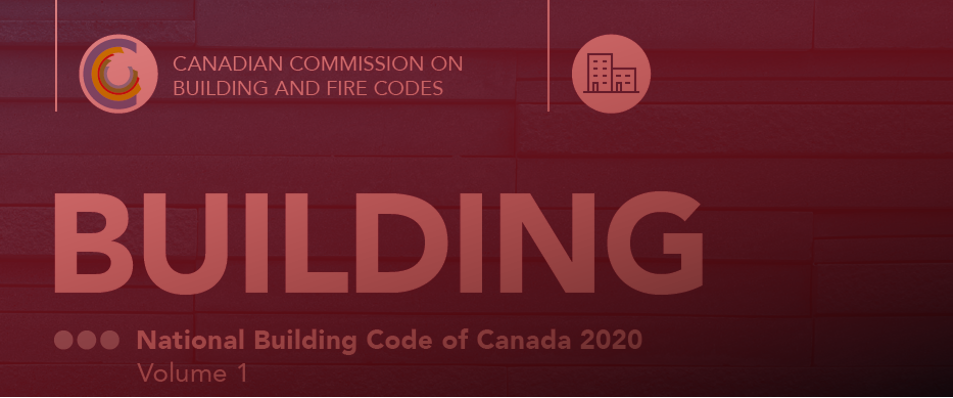
Latest Software Blog Posts
Change Notification: Updates to NBCC 2020 and How They Impact MASS

As NBCC 2020 becomes the standard across Canada, MASS has updated its design framework to align with the new code.
In cases where a bug or other issue is found in the MASS software, announcements are posted on the software’s known bugs page, as well as on this page here. It is always encouraged that suspected bugs are submitted by engineers through technical support.
Disclaimer: This post is exclusively intended to provide an overview of how NBCC 2020 provisions have been incorporated into the MASS design software. It is up to the professional discretion of the designer to input an appropriate layout, boundary and loading conditions, interpret the results, and determine how they should be incorporated into their designs. As per the end user license agreement (and also recommended within PEO’s guidelines for using engineering software), a tool cannot be considered competent and reliance on a tool does not relieve the user of responsibility.
Summary
MASS v4.3 evaluates designs using the 2020 edition of the National Building Code of Canada (NBCC), transitioning from previous versions which used NBCC 2015.
With NBCC 2020 now adopted across most provinces and territories, this update was a natural evolution for MASS. While many code changes do not directly impact masonry design, several important updates are now incorporated into MASS, including:
- Introduction of Serviceability Limit State (SLS) load combinations;
- Revisions to seismic provisions, including how seismic inputs are defined;
- New design verification requirements for high-importance and post-disaster buildings.
These updates help MASS remain aligned with national design practices while enabling users to evaluate designs with a higher degree of precision and facilitating code compliance verifications.
Background Information
NBCC 2020 introduces several critical changes that affect structural design procedures. In the context of MASS, the most relevant are the addition of Serviceability Load Combinations and changes to Seismic Provisions.
Serviceability Load Combinations
NBCC 2020 introduced SLS load combinations in Table 4.1.3.4. These combinations are used in MASS v4.3 to evaluate deflections, in alignment with the updated code requirements.
In previous versions, a mix of approaches were used to across the different MASS modules. These are highlighted in Table 1 below:
Table 1: Deflection Evaluation Approaches Used in Previous MASS Versions
| MASS Module | Load Combination Used | Check Done |
| Shear Wall Module | ULS Load Combinations used for Seismic Load Cases | Seismic Drift Check (NBCC 2015 4.1.8.13) |
| ULS Load Combinations used for all other Load Cases | No code checks (informational only) | |
| Out-of-Plane Wall Module | Internal SLS Load Combinations used for Wind Load Cases | Allowable Deflection (CSA S304-14 10.14.3) |
| Beam Module | ULS Load Combinations | Allowable Deflection (CSA S304-14 11. 4.5) |
MASS v4.3, shifts everything to align with NBCC 2020. When SLS load combinations are used they are labeled with the subscript “SLS” to denote their serviceability-level nature. This change aligns deflection evaluations with NBCC-defined SLS combinations and removes the previous mix of unfactored, ULS, and non-referenced approaches. Table 2 below highlights the changes:
Table 2: Deflection Evaluation Approaches Used in MASS v4.3
| MASS Module | Load Combination Used | Check Done |
| Shear Wall Module | ULS Load Combinations used for Seismic Load Cases | Seismic Drift Check (NBCC 2020 4.1.8.13) |
| SLS Load Combinations used for all other Load Cases | Wind Check (NBCC 2020 4.1.3.5 (3)) | |
| Out-of-Plane Wall Module | SLS Load Combinations used for Wind Load Cases | Allowable Deflection (CSA S304-14 10.14.3) |
| Beam Module | SLS Load Combinations | Allowable Deflection (CSA S304-14 11. 4.5) |
This update ensures consistency with NBCC 2020 and provides more realistic assessments of structural deflection under service conditions.
Seismic Provisions
Seismic Category
One of the fundamental changes in NBCC 2020 is the shift from using a seismic hazard index to a Seismic Category (SC) classification as the basis for seismic design. This Seismic Category is determined using the 0.2s and 1.0s spectral acceleration values, each multiplied by the Importance Factor, IE. These spectral acceleration values can be obtained either from the 2020 National Building Code of Canada Seismic Hazard Tool or from site-specific geotechnical reports. The Seismic Category of the building can then be determined using Table 4.1.8.5.-B in NBCC 2020, replicated below:
| Seismic Category | IES(0.2) | IES(1.0) |
| SC1 | IES(0.2) < 0.2 | IES(1.0) < 0.1 |
| SC2 | 0.2 ≤ IES(0.2) < 0.35 | 0.1 ≤ IES(1.0) < 0.2 |
| SC3 | 0.35 ≤ IES(0.2) ≤ 0.75 | 0.2 ≤ IES(1.0) ≤ 0.3 |
| SC4 | IES(0.2) > 0.75 | IES(1.0) > 0.3 |
Another key change is that the site coefficient, Fa, is no longer applied separately to the spectral acceleration values—these coefficients are already incorporated into the seismic hazard data provided by the Seismic Hazard Tool. This change simplifies the process of determining design spectral acceleration values.
MASS v4.3 implements Seismic Categories per NBCC 2020. CSA S304-14 (Clause 16) defines limits using Seismic Hazard values; CSA S304-24 updates to Seismic Categories and relocates these limits to Clause 17. To maintain consistency, MASS adopts the Clause 17 limits from CSA S304-24. Although S304-24 is not yet referenced by any building code, it has undergone rigorous technical review, and adopting its harmonized limits is justified to ensure internal consistency and alignment with the evolving standard.
Additional System Restrictions
Clause 4.1.8.10 in the 2020 version of the NBCC has been amended to include additional system restrictions for high importance category buildings. In the past, additional system restrictions only existed for post-disaster buildings.
When a single storey shear wall in a building with a high importance category is designed, MASS will check if:
-
- Rd ≥ 2.0 (Moderately Ductile) if SC = 4
- Rd ≥ 1.5 (Conventional Construction) otherwise
For multi-storey shear walls with a high importance category, an additional check will be conducted to determine if there are any irregularities that exist within the building. A high importance category building where the Seismic Category is SC4 cannot have a Type 1, 3, 4, 5, 7, 9, or 10 irregularity as described in Table 4.1.8.6. However, MASS does not check for Type 3, 4, 5, 7, 9, or 10 irregularities. Additionally, a building with a high importance category cannot have a Type 6 irregularity; this will be checked within MASS. The Multi-Storey Design Strategy page goes into depth about the irregularities that can and cannot be designed for in MASS.
Overturning Moment
The Overturning Moment calculation was first introduced in MASS Version 4.2. NBCC 2020 updated the values of the Higher Mode Factor, Mv, and Base Overturning Moment Reduction Factor, J, in Table 4.1.8.11 used to calculate the Overturning Moment from NBCC 2015.
The revised NBCC 2020 values generally tend to raise the Higher Mode Factor, Mv, and lower the Base Overturning Moment Reduction Factor, J, values. This results in reduced base overturning moments applied to shear walls in seismic design.
Additional Performance Requirements
Lastly, the big change in NBCC 2020 is the inclusion of the additional performance requirements for post-disaster and high-importance category buildings (note that, since the maximum height of masonry buildings in SC4 is 20 m, no changes in MASS were made to reflect sentence (4) of clause 4.1.8.23 for normal importance category buildings) found in Clause 4.1.8.23. For MASS v4.3, two critical verification checks have been introduced to ensure that such structures exhibit elastic behavior under seismic loading and maintain interstorey deflections within the new code-defined limits.
1. Elastic Behaviour Verification
For post-disaster buildings located in Seismic Categories SC2, SC3, or SC4, NBCC 2020 mandates that the structure must be evaluated using 5%-damped spectral acceleration values corresponding to a 5% probability of exceedance in 50 years. The objective is to demonstrate that the structure remains elastic under a specified lateral earthquake force, V, using the parameters:
- IE=1.0
- RdRo=1.3
Within MASS, when these conditions are met (i.e., a post-disaster structure in SC2, SC3, or SC4), the program prompts users to input the specified lateral earthquake force, V, as calculated in accordance with NBCC 2020 Clause 4.1.8.23.
This specified lateral earthquake force, V, is subsequently compared against the nominal shear resistance, as prescribed in CSA S304-24, Clause 17.3.5.3. Using the same force, a factored moment is determined and compared with the nominal moment resistance. Although S304-24 is not yet referenced by any building code, it has undergone rigorous technical review, and therefore we feel its adoption within MASS is warranted ahead of formal code referencing.
If both the shear and moment capacity checks are satisfied, the structure is deemed to behave elastically under the specified loading conditions.
For high-importance category buildings in Seismic Categories SC3 or SC4, the verification process is similar, except the specified lateral earthquake force to be input by the user shall be based on a 5%-damped spectral acceleration value with a 10% probability of exceedance in 50 years. All subsequent checks follow the same methodology.
2. Interstorey Deflection Verification
The second verification done in MASS is to ensure that interstorey drift limits are not exceeded. This is assessed using:
- IE=1.0
- RdRo=1.0
MASS calculates the lateral deflection at each floor level in multi-storey walls. The interstorey deflection must not exceed 0.005 times the storey height.
Conclusion
With the release of MASS v4.3, masonry designers now have access to a comprehensive design tool that fully aligns with the 2020 edition of the National Building Code of Canada (NBCC). This version represents a significant step forward in ensuring masonry structures are evaluated using the methods prescribed by the building code, especially in areas of seismic design and serviceability performance.
Key enhancements in v4.3 include the adoption of Serviceability Limit State (SLS) load combinations for deflection checks, integration of the Seismic Category framework, and enforcement of new system and performance requirements for high-importance and post-disaster buildings. In addition, updates to the Base Overturning Moment Reduction Factor bring MASS in line with the evolving expectations for seismic resilience and structural integrity.
These updates not only reflect the technical changes introduced in NBCC 2020 but also reinforce MASS’s role as a reliable, code-compliant solution for masonry design in Canada. As codes continue to evolve, MASS remains committed to supporting structural engineers with up-to-date, accurate tools for modern design practice.


